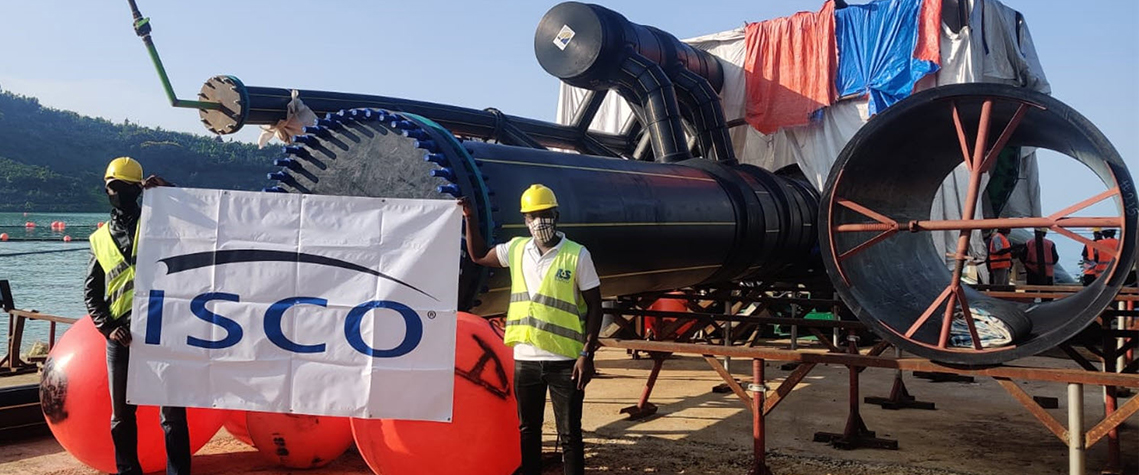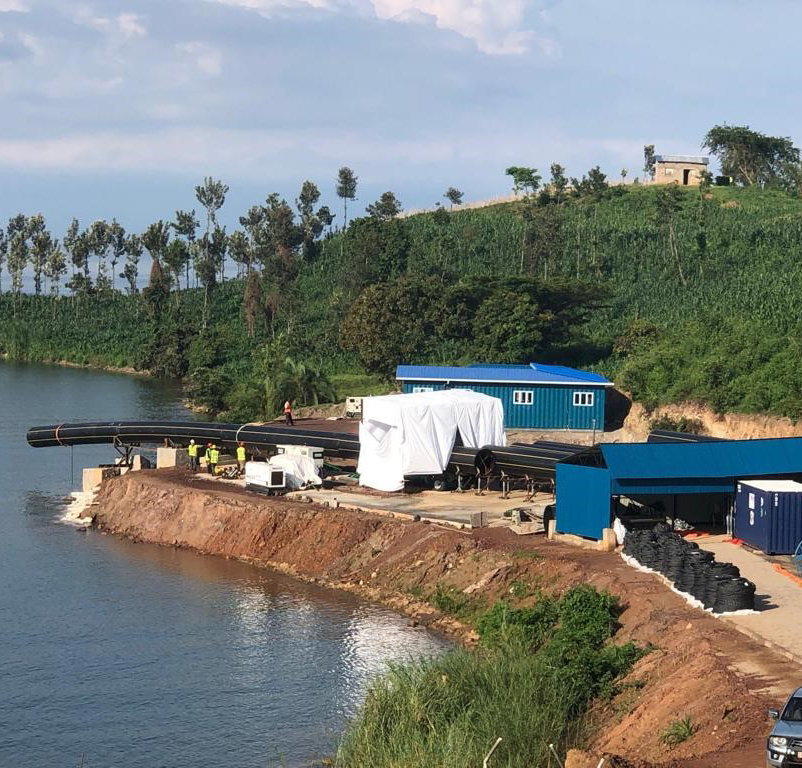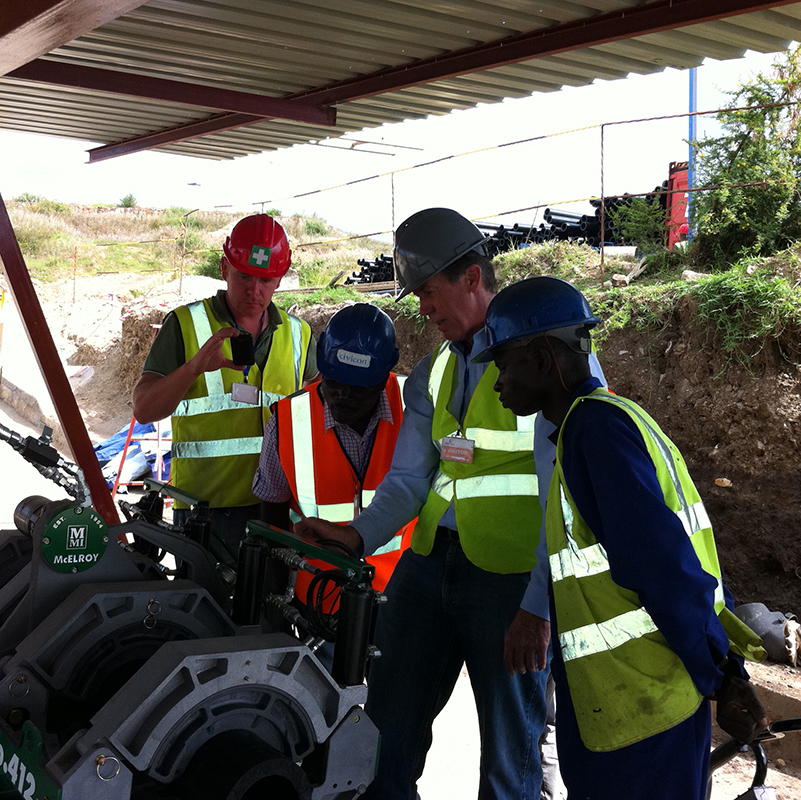
The Challenge
Bordered by Rwanda and the Democratic Republic of Congo sits Lake Kivu, an African Great Lake formed along the East African Rift. Lake Kivu is one of the world’s deepest freshwater lakes and contains enormous quantities of dissolved carbon dioxide gas. Held at depth due to a suspended mineral barrier and forced down by water pressure above, the carbon dioxide is trapped with methane. Both products of decomposing biological matter within the lake. The vast amounts of carbon dioxide and methane contained in Lake Kivu present a potentially grave risk for local shoreline communities. A similar situation produced deadly consequences in Cameroon in 1986 when Lake Nyos experienced an event known as “lake turnover.” Carbon dioxide was released into the atmosphere as a gas cloud and thousands of people and livestock were killed.

Minimizing Potential Disaster
An innovative power company recognized that there could be a way to minimize the potential for a deadly disaster at Lake Kivu, while also harnessing the lake’s suspended methane for power. The solution was a project called Kivu-56.
Shema Power Lake Kivu Limited (SPLK), based in Rwanda, secured the rights from the Rwandan government to extract methane from the depths of the lake to fuel a new gas-to-power generation plant in the Rubavu District.
A Houston, Texas-based oil and gas engineering company, Antares Offshore, was contracted by SPLK to present engineering solutions for the project. The project scope included construction of offshore facilities for gas extraction, a pipeline to transport the methane from the offshore facility to the shore, and an onshore facility which includes a new 56-megawatt gas-fired power generation plant.
The offshore facility consists of four barges to house the gas scrubbers, compressors, and other processing equipment. The barges also support eight water – gas separators that are submerged at 65 feet (20 meters) as well as the risers that operate as a natural siphon to deliver the gas to the separators and discharge the degassed water. The intake risers pull water/gas from depths greater than 1100 feet (350 meters) and return the degassed water to a depth of 850 feet (270 meters).
Due to the corrosive nature of the waters within Lake Kivu, Antares Offshore and SPLK chose to use high density polyethylene (HDPE) pipe, fittings, and fabricated components for the intake and discharge risers, as well as the wash water system and methane transmission pipeline. HDPE provides a long-term, corrosion-resistant piping solution when compared to other piping materials.
ISCO’s sales and technical engineering groups worked closely with both Antares Offshore and SPLK engineers to provide technical expertise on the physical properties and performance attributes of HDPE. This incorporated an analysis of the varying pressure ratings, temperatures and flow capacities of the various systems in the methane extraction and transmission systems:
- Large diameter gas intake lines
- De-gassed discharge lines
- Wash water intake and discharge lines
- Methane transmission pipeline
Because the HDPE pipes were to be installed in a marine environment, ISCO provided technical details on HDPE’s structural properties. These included: load bearing capability, buoyancy forces, vacuum events, and other physical considerations all relevant in a marine installation. In addition, ISCO provided insights on HDPE fabrication that allowed for maximizing efficiency of the very large intake and discharge manifolds.
The final design included the use of 54-inch (1400 mm) diameter HDPE raw water risers and 48-inch (1200 mm) diameter HDPE degassed water risers. The raw gas is transferred from the separators to the barges in 12-inch (315 mm) diameter HDPE pipes.
Once the methane gas is processed at the barge, it is exported to the shoreline approximately eight miles (12 km) away using a 12-inch (315 mm) diameter HDPE pipe. This export pipeline is submerged to a depth of 30 feet (10 meters) to avoid interference with water traffic and the effects of inclement weather. An elaborate arrangement of floats and weights were used to ensure the lake’s currents do not affect the export pipeline’s long-term performance. The final destination for the methane gas is the greenfield 56-megawatt power generation plant where 16-inch (400 mm) HDPE pipes are used for the wash-water intake and discharge lines.
ISCO’s involvement was two-fold upon receipt of the purchase order. First, ISCO manufactured some of the needed HDPE components while overseeing sub-vendor activity, including key sub-vendor Union Pipes Industry LLC (UPI), based in Abu Dhabi. UPI played a crucial role in the extrusion of HDPE pipe and fabrication of the large diameter HDPE components. Second, ISCO supplied several different models of fusion welding equipment required for construction of the project’s various HDPE systems. A USA-based ISCO fusion operator was deployed to the project site to conduct onsite fusion welding training and oversight for the installing contractor.

CONCLUSION
Today, because of the innovation and team work of SPLK, Antares Offshore, ISCO, UPI and others, the residents of Rwanda and the Lake Kivu region will be enjoying reliable, green electricity and safer lakeside existence.
The Kivu-56 project is positively impacting both the economy and the local inhabitants. For example, many local residents are included in the construction of the gas extraction barge and power plant, resulting in earned income and new job skills. Also, local companies that are a major contributor to the Rwandan economy, such as agriculture and tourism, will have consistent electricity to power their businesses, allowing for greater output and export potential. For these reasons, the Kivu56 project is considered one of the most innovative global power generation projects in decades.
SUBSCRIBE TO ISCO UPDATES
ISCO Updates
[gravityform id="21" title="true"]
